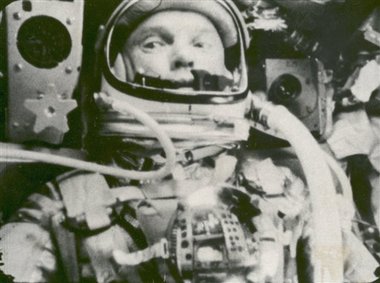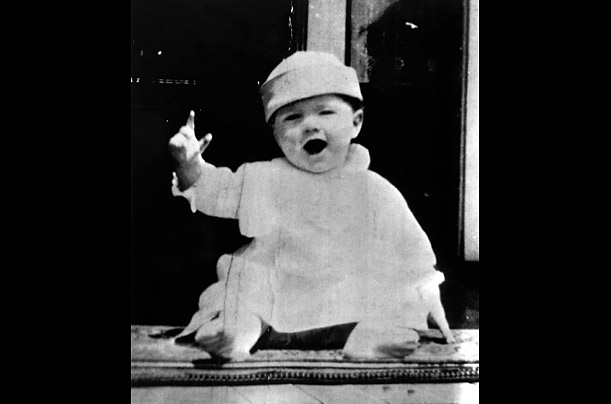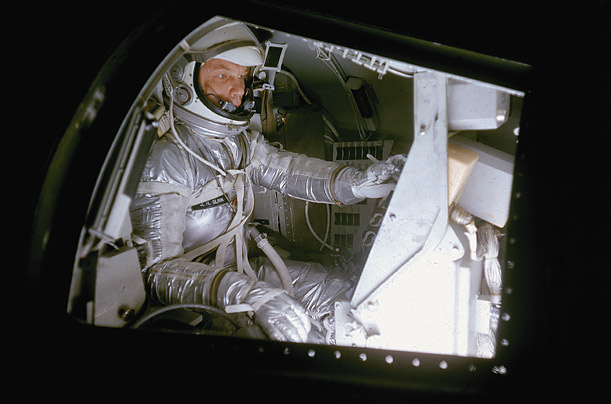John Glenn on the 50th Anniversary of His Historic Flight
Earthlings count down to 50th anniversary of the first American flight to orbit the Earth
© 2012 NOLA.com. All rights reserved.
Published: Saturday, February 18, 2012, 10:00 AM
John Glenn fever has taken hold in the U.S. once again. Three days before the 50th anniversary of his historic flight, the first American to orbit the Earth addressed employees at Kennedy Space Center. The NASA auditorium was packed Friday with hundreds of workers hoping to see the space legend.

The 90-year-old Glenn was joined at both events by Scott Carpenter, 86, the only other survivor of the original Mercury 7 astronauts, as the weekend of anniversary festivities began.
Glenn said he recollects the flight so often it seems like it took place just a couple weeks ago. He and Carpenter visited their old launch pad, Complex 14. It was from the blockhouse there that Carpenter called out “Godspeed John Glenn,” a phrase that has become one of the most memorable quotes from spaceflight.
The national attention then was “almost unbelievable,” Glenn said, adding that he and his colleagues learned to live with the acclaim “or tried to anyway.”
The early 1960s were a magical time in Cape Canaveral and adjoining Cocoa Beach, Carpenter said. “Everyone was behind us. The whole nation was behind what we were doing,” he said.
Glenn’s Friendship 7 capsule circled Earth three times on Feb. 20, 1962. Carpenter followed aboard Aurora 7 on May 24, 1962.
They were the third and fourth Americans to rocket into space. Alan Shepard and Gus Grissom flew short suborbital missions in 1961, the same year the Soviet Union launched two cosmonauts into orbit on separate shots.
The Cold War was raging, and America was desperate to even the score. Glenn could have died trying if the heat shield on his capsule was loose as flight controllers feared. But the protective shield was tight, and Glenn splashed down safely.
Glenn, a U.S. senator for Ohio for 24 years, returned to orbit aboard shuttle Discovery in 1998, becoming the world’s oldest spaceman at age 77 and cementing his super-galactic status.
“Flying in space at age 77, you’ve given me hope. I’ve got a few good years left, and I’m ready,” Kennedy Space Center director Robert Cabana, a former shuttle commander, told Glenn. Another retired shuttle commander, NASA Administrator Charles Bolden Jr., shared how the Mercury astronauts “really lit up the world for me in terms of probability or possibility of things that we could do.”
Glenn recalled how the Mercury astronauts traveled during their training to Cape Canaveral to watch a missile blast off. It was a night launch, and the rocket blew apart over their heads.
“That wasn’t a very good confidence-builder for our first trip to the cape,” Glenn said. Improvements were made, and Glenn said he gained confidence in his Mercury-Atlas rocket, a converted nuclear missile. Otherwise, he said he would not have climbed aboard.
Glenn and his wife, Annie, who turned 92 on Friday, were on hand Thursday evening for the attempted liftoff of the newest of the Atlas rockets, an unmanned booster that NASA contractors hope one day will carry astronauts. Windy weather forced a scrub of the Navy satellite launch.
“Scrub! Welcome to the space program,” Glenn said at the news conference held in the old Mercury Mission Control, now located at the Kennedy Space Center Visitor Complex. “Not anything brand new to me.”
It took 11 tries for Glenn to get off the pad in 1962. He boarded three times before finally taking off, which he believes created even more of a public frenzy over his flight.
On Saturday, Glenn and Carpenter will reunite with more than 100 retirees who worked on Project Mercury. And on Monday, the actual anniversary, Glenn will be feted at Ohio State University; its school of public affairs bears his name.
Glenn said he’s uncertain how he’ll mark the exact time of liftoff — 9:47 a.m. — come Monday. He admitted sometimes forgetting to mark the precise moment in the past. But not for this golden one, “for sure.”
Besides reminiscing Friday, Glenn and Carpenter spoke of the future of space travel. When asked by Cabana “given where we’ve come, where are we going,” Carpenter had a one-word response. “Mars.” The crowd applauded.
Glenn had more to offer, stressing the importance of exploration as well as scientific research. He criticized the previous administration for promoting lunar bases and Mars travel, but providing no funds, and for canceling the space shuttle program. “A big mistake,” he said.
Glenn noted how NASA is relying on the Russians to transport American astronauts to and from the International Space Station, now that the shuttles are retired. That will continue until private U.S. companies have spacecraft ready to fly crews, an estimated five years away.
Carpenter said he deplores the fact that America seems to have lost its resolve to press ahead in space exploration, as evidenced by NASA’s small share of the federal budget.
Another change in five decades: Glenn pointed out how cellphones have “more computing capacity than anything back at the time when we were flying in ’62.” Society has become so accustomed to new things, he said, that it will be difficult for NASA to generate the kind of excitement that Project Mercury or Apollo’s moonwalks did.
Repeatedly Friday, Glenn and Carpenter paid tribute to their five deceased Mercury colleagues: Shepard, Grissom, Wally Schirra, Gordon Cooper and Deke Slayton.
“We need five more chairs here,” Glenn told the NASA crowd.
The two pioneers received standing ovations.
Marcia Dunlap of The Associated Press wrote this report.

Glenn at nine months old in Cambridge, Ohio, in 1922. He would soon meet the neighborhood girl he would eventually marry. “Annie and I met in the playpen,” he likes to say

A Model Mercury
Inside a training model of the Mercury spacecraft in 1961, Glenn familiarizes himself with the layout of the instrument panels. The capsule was so small, astronauts liked to say you didn’t climb inside it — you simply put it on.
http://img.timeinc.net/time/photoessays/2011/john_glenn/john_glenn_12.jpg
Read more: http://www.time.com/time/photogallery/0,29307,2083225,00.html#ixzz1mlXsIh5N